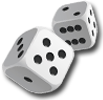



play board games
Board game reviews, strategy tips & session reports
Hegemonic Board Game Review
 Stats:
Stats:
No. of players: 2-6
Amount of time to play: 45-60 min per player
Age requirements: 13+
Set-up time: 10 minutes
Hegemonic is a 4X game in which you must build a strong network in order to keep expanding your influence and power. If you build a network that can dominate your opponents you win.
Hegemonic Rules Description:
Each round of Hegemonic you collect income, explore new sector tiles and build your network. At the end of the round you score VPs based on the large galactic tiles you control. Once there are no sector tiles to place or all galactic tiles have been filled the game ends.
The amount of money you collect and the cost to build new structures are based on the number of structures you have already built. There are three types of buildings and correlate with the three types of power in the game, Martial, Political and Industrial.
Each sector can hold up to three structures which have Range and Power. Range is the distance at which a structure can extend its Power. You must have enough range to build on an empty sector tile or takeover an opponent’s structure.
After you collect your income and place a sector tile on the board you may draw or build a technology. Technologies are tied to the three types of Power and give you a boost in that Power type. You may have three different technologies built at any time.
Once all players build or draw tech cards you have three phases of taking actions. Actions are declared secretly using action cards. Three of the action cards let you build as many structures of a particular type that you can afford and reach with your range. One lets you attack and destroy an opponent’s structure. Another lets you takeover an opponent’s structure and replace it with your own. The last action card lets you gain more money or place more sector tiles. All of the cards have a way for you to gain some money and build more technologies too.
Conflicts are resolved differently based on the different structures involved. Industrial Power is calculated by totaling the number of your industrial structures in the same and adjacent sectors. Political Power is derived from all your political structures on sectors that have the same colored background. And Martial Power comes from all martial structures within range of the attacking or defending structure (up to 2 sectors). Once calculated you secretly play a tech card from your hand. The bottom of the tech cards have Power values matching the three Power types. You add the matching value to your attack and this is your total Power. The player with the most Power wins. Winning attackers destroy or takeover losing defenders. Winning defenders merely destroy fleet and agent units that were attacking.
The game ends at the end of the turn when the sector pool is empty. You get bonus points for your build technologies and the player with the most points wins.
Quick Review of Hegemonic:
Hegemonic is a deep, strategic, brain burner. It has little luck and a lot of crunch. Whether or not you and your group enjoy it might depend on how much they enjoy those types of games and the learning curve.
The components for the game are very nice. The tiles and bases are bright, looks great and durable. The player boards are fantastic. They are notched and help you track income and cost for new bases. The rules are easy to read and straightforward but not easy to understand. I am not sure why but I has to read them twice and watch a video about how to play. Even still it feels like some small details were missing. Once we played the game things were not overly complex, but the rules made it seem like they were. Lastly the box doesn’t seem to fit everything easily. Though not a big deal it is an annoyance.
The Exploration phase of Hegemonic is done very well. Many 4X games let you draw a tile and place it. Here there is a pool of tiles that you add one to and then choose where to place one of the tiles in the pool. This makes Exploration more strategic and less luck based, especially since you can place your tile anywhere. Is there a tile in the pool that benefits you most? Or one that might hurt an opponent if placed in a certain location? It matters.
I like the three different types of Power and how they relate to each other and your player board. Since each type of base has different way to calculate Range and Power you need to be aware of how you place them and where you build to. Also as you build bases it affects your income and the tech tier you are on. The relationship of the three Powers and bases is well designed and adds depth to the game.
This 4X game has a good bit of Euro in it. I like that as I enjoy Eurogames and yet also like conflict. And believe me there will be conflict. You cannot just build your little empire in one area of the galaxy and not be bothered to interact with the other players. You will need to go after them or they will soon come for you. Especially since scoring is based on area control and players that have an entire area to themselves score bonus points. You also score bonus points in the galactic core in the center of the board. This too encourages interaction and conflict.
Be aware there is a steep learning curve for Hegemonic. It will take a game or so for things to really click with even hard-core gamers. The game also slows down the longer it goes as players calculate everything they need to know in order to take the ”best” turn.
Hegemonic feels like a mix of Power Grid and Eclipse to me. On one hand you must build a strong network of bases and on the other are the 4X theme and mechanics. There is little left to luck in the game yet there are advanced rules and variants that increase its replay value. Honestly I had a hard time understanding the game and how best to win. It just didn’t click in my brain. Maybe it is too abstract or I am too slow. I understand that will not be everyone’s experience but I think that affects my rating of the game. Some people will play this and understand and love it right away. I gave it an overall of 4 simply because of the learning curve, time and enjoyment I got from Hegemonic would not get it to the table enough for it be rated higher. I think you should try it and see how it vibes with your group.
Score and synopsis: (Click here for an explanation of these review categories.)
Strategy 5 out of 6
Luck 1 out of 6
Player Interaction 6 out of 6
Replay Value 5 out of 6
Complexity 6 out of 6
Fun 4 out of 6
Overall 4 out of 6

Leave a Reply